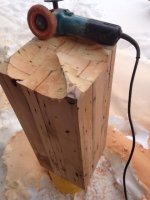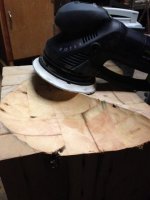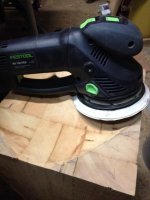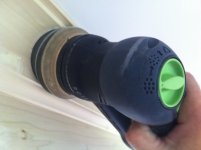Hello,
Messing around with this sculpted seat/stool. I've used my angle grinder with a carbide disc to hog out the rough shape but need to refine and smooth it. My original (poor) plan was to refine with RO150, but it's way too large to manage these curves. Any opinions on if the interface pad can manage these curves? Or would it be too soft to level/fair the bumps left from uneven grinding? I know another option is the RO90 but that's not really in the budget right now. Hoping the wise FOG chorus can encourage that this is possible with either the soft or interface pad.
Thanks for any advice!
[attachimg=1]
[attachimg=2]
[attachimg=3]
Messing around with this sculpted seat/stool. I've used my angle grinder with a carbide disc to hog out the rough shape but need to refine and smooth it. My original (poor) plan was to refine with RO150, but it's way too large to manage these curves. Any opinions on if the interface pad can manage these curves? Or would it be too soft to level/fair the bumps left from uneven grinding? I know another option is the RO90 but that's not really in the budget right now. Hoping the wise FOG chorus can encourage that this is possible with either the soft or interface pad.
Thanks for any advice!
[attachimg=1]
[attachimg=2]
[attachimg=3]





